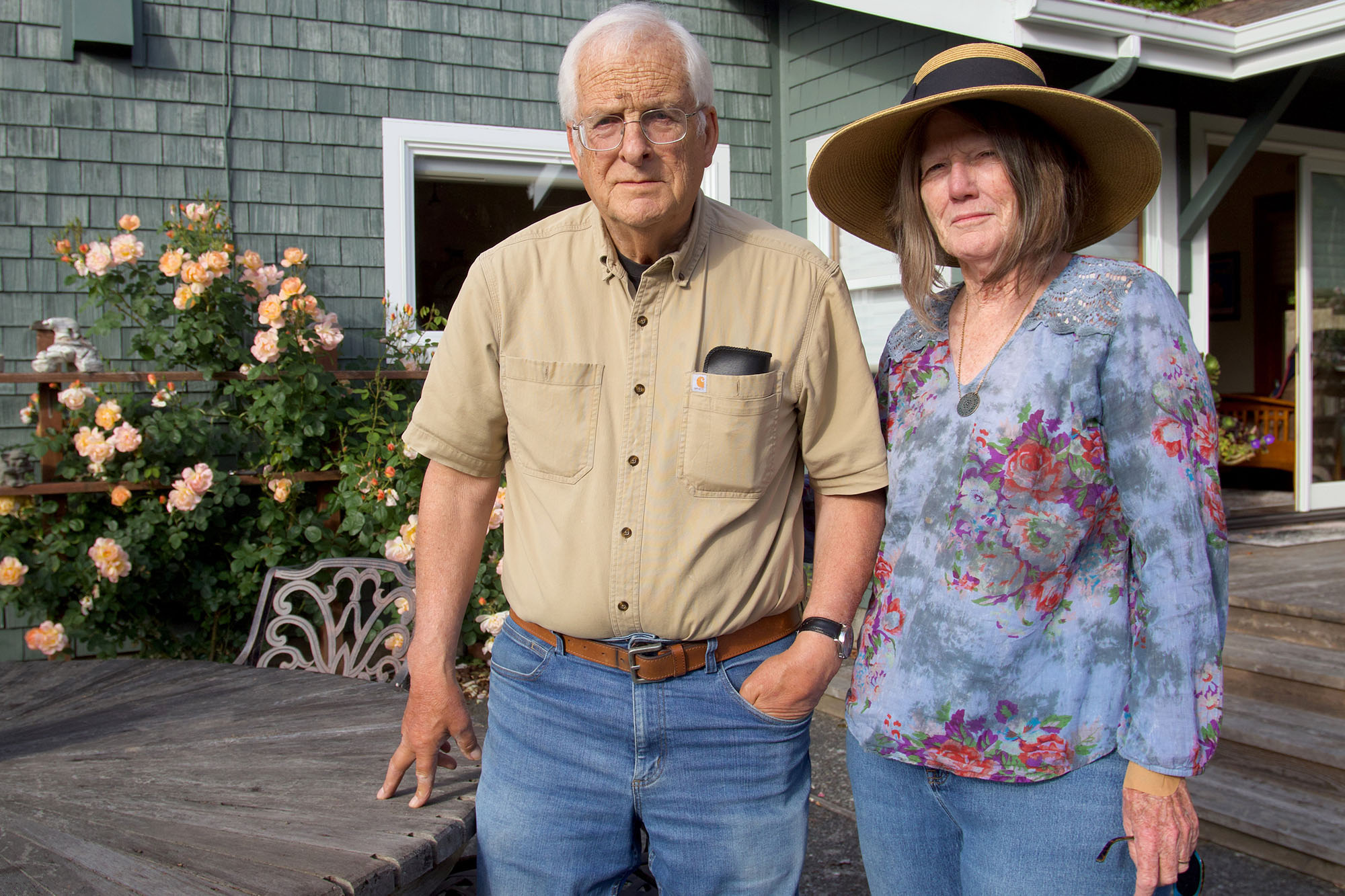Editor’s Note: In May 2018, UCSF published highlights from their evaluation research in Key Findings from Two-Year Evaluation of Health Workforce Pilot Project #173 — Community Paramedicine.
Community paramedicine connects specially trained paramedics with other health care providers to help patients and local health care systems provide care more effectively and efficiently while easing pressure on overcrowded emergency departments (EDs). With strong support from the California Emergency Medical Services Authority (EMSA), state health planners approved community paramedicine pilot projects across California. For nearly three years, these projects have leveraged paramedics’ unique skills and round-the-clock availability in a collaboration with physicians, nurses, and social workers. Instead of automatically dropping off every patient at a hospital ED, community paramedics are demonstrating an effective way to plug holes in the health and social services safety net.
As the designated independent evaluator for these pilots, I’ve been analyzing community paramedicine providers’ performance since 2015. As of September 30, 2017, they had treated more than 2,500 patients. My team at the University of California, San Francisco, has carefully reviewed data about these projects. Our second report on the evaluation, released last month, concluded that community paramedic projects have:
- Improved coordination among providers of medical, behavioral health, and social services
- Reduced preventable ambulance transports, emergency department visits, and hospital readmissions
- Resulted in no adverse outcomes for patients
Community Paramedics: Team Players
Community paramedics do not operate independently; they work under physician control, either directly or by emergency medicine protocols designed by experts. It’s important to note that the pilot projects have not in any way displaced other health professionals in their jurisdictions. They have only extended the reach of physician-led care to individuals who struggle without higher degrees of care than traditional systems can offer. Community paramedics have collaborated effectively with registered nurses, physicians, and other health professionals to enhance the services available to people in need. The California program currently consists of 10 community paramedicine projects testing six different service concepts, each designed to solve specific, unique problems identified by local fire, emergency medical services (EMS), and social service leaders.

The six pilot projects fall into the following categories of activity by community paramedics:
- Short-term, home-based follow-up care for people recently discharged from a hospital due to a chronic condition (e.g., heart failure) to reduce readmissions and improve patients’ ability to manage their condition.
- Case management services for frequent 911 callers and frequent ED clients to help patients access primary care and non-medical services, such as food, housing, and substance use disorder treatment.
- Dispensing medications to tuberculosis patients and observing them taking drugs that prevent spread of the disease.
- Collaborating with hospice agencies and families to treat patients in their homes according to their wishes, instead of transporting them to an ED, in response to a 911 call.
- Transporting people in mental health crises directly to a crisis center instead of an ED, with subsequent transfer to a mental health facility.
- Offering transport directly to a sobering center instead of an ED to people who are acutely intoxicated but do not have acute medical or mental health needs.
Pilot Sites, Community Paramedicine Concepts, and Enrollment Through Third Quarter, 2017
| Community Paramedicine Concept | Lead Agency | Date Implemented | Total Patients Enrolled |
| Postdischarge | Alameda City EMS | June 1, 2015 | 106 |
| Postdischarge | Butte County EMS | July 1, 2015 | 799 |
| Postdischarge | San Bernardino County and Rialto Fire Depts. | August 13, 2015 | 197 |
| Postdischarge | UCLA Center for Prehospital Care* | September 1, 2015 | 154 |
| Postdischarge | Medic Ambulance Solano | September 15, 2015 | 145 |
| All Postdischarge Projects | 1,401 | ||
| Frequent EMS User | Alameda City EMS | July 1, 2015 | 57 |
| Frequent EMS User | City of San Diego | October 12, 2015 | 46 |
| All Frequent EMS User Projects | 103 | ||
| Tuberculosis | Ventura County EMS | June 1, 2015 | 42 |
| Hospice | Ventura County EMS | August 1, 2015 | 270 |
| Alternate Destination — Mental Health | Mountain Valley — Stanislaus EMS | September 25, 2015 | 251 |
| Alternate Destination — Sobering | San Francisco Fire Dept. | February 1, 2017 | 400 |
| *Ceased enrolling patients on August 31, 2017.
Source: Janet Coffman, Cynthia Wides, and Matthew Niedzwiecki, Update of Evaluation of California’s Community Paramedicine Pilot Program, Healthforce Center and Philip R. Lee Institute for Health Policy Studies at UCSF, February 7, 2018, https://healthforce.ucsf.edu/publications/evaluation-california-s-community-paramedicine-pilot-program. | |||
No Adverse Outcomes, Plus Potential Savings in First Two Years
The pilot projects reported no adverse outcomes, thereby demonstrating that specially trained paramedics can provide services safely and effectively.
Because Medicare beneficiaries accounted for the largest share of persons enrolled in the pilot, most of the potential monetary savings attributable to community paramedics accrued to Medicare and hospitals serving Medicare patients. The Medi-Cal program and providers that serve Medi-Cal beneficiaries also accrued potential savings. The details are included in the report.
Our evaluation yields consistent findings for the six community paramedicine concepts listed above. In most cases, they have yielded potential savings for payers and other parts of the health care system. A seventh concept – transport directly to an urgent care center – did not enroll enough patients for conclusions to be drawn about its efficacy. It was discontinued by the project sponsors.
The projects have been so successful that other jurisdictions have stepped up to get approval for their own sites. In December 2017, the Office of Statewide Health Planning and Development (OSHPD) approved nine additional projects that will test four of the community paramedicine concepts listed above. These sites are expected to begin enrolling patients during 2018.
The experience of community paramedicine programs across the United States suggests that benefits increase as the programs mature, solidify partnerships with health and social service providers, and carve out a niche within the community. California’s current EMS system design is well-suited to use the results of these pilot programs to optimize the design and implementation of proposed programs and to assure effectiveness and patient safety. The two-tiered system of local control with state oversight enables cities and counties to design and administer programs to meet local needs, while both local and state oversight and regulation ensure patient safety.
Authors & Contributors

Janet Coffman
Janet Coffman, a health services researcher and associate professor at the UCSF School of Medicine’s Institute for Health Policy Studies, strives to build bridges between academia and policymakers. She has coauthored articles and reports on health workforce shortages, geographic maldistribution, and lack of racial and ethnic diversity among health professionals. Janet has published in a wide range of journals, including Health Affairs, Health Services Research, the Milbank Quarterly, and Pediatrics. Janet received a master’s degree in public policy from the University of California, Berkeley, as well as a doctoral degree in health services and policy analysis. She previously worked for the US Senate Committee on Veterans Affairs, the San Francisco Department of Public Health, and the UCSF Center for the Health Professions.





